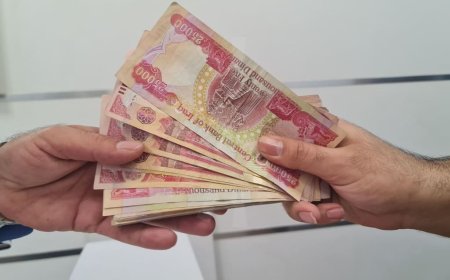Covid Cases In India
Covid Cases in India are monitored daily by health authorities, with region-wise updates, safety guidelines, and vaccination drives helping control the spread of the virus.

The COVID-19 pandemic has been one of the most defining global events of the 21st century. In India, a country with over 1.4 billion people, managing the pandemic posed an extraordinary challenge. From the first confirmed case in early 2020 to widespread vaccination efforts and the current phase of endemic management, Covid Cases In Indiahave evolved through several critical phases.
This blog offers a comprehensive look at the rise and fall of COVID-19 cases in India, the impact on public health, how the country responded, and the key lessons learned for the future.
? The Beginning: First COVID Cases in India
Indias first confirmed case of COVID-19 was reported on January 30, 2020, in Kerala, involving a student who had returned from Wuhan, Chinathe origin of the outbreak. At that time, few could have predicted the global pandemic that would follow.
In the following weeks, sporadic cases were reported, mainly among travelers from abroad. By mid-March 2020, community transmission began surfacing, prompting urgent national measures.
? The First Wave (March 2020 September 2020)
India entered a nationwide lockdown on March 24, 2020, one of the strictest and largest lockdowns globally. The objective was to delay the spread of the virus and strengthen the country's healthcare infrastructure.
Key Stats from the First Wave:
-
Peak cases: ~90,000 per day (September 2020)
-
Total deaths by end of wave: ~1.5 lakh
-
State hotspots: Maharashtra, Delhi, Tamil Nadu, and Gujarat
-
Testing and tracing: Initially low but rapidly scaled up
While the lockdown helped flatten the curve, it had severe socioeconomic impactsparticularly on migrant workers and the unorganized sector.
?? The Second Wave (March 2021 June 2021)
The second wave of COVID-19 in India was devastating. Fueled by the Delta variant, the virus spread rapidly, overwhelming the healthcare system.
Key Stats from the Second Wave:
-
Peak daily cases: Over 4 lakh (400,000) in May 2021
-
Peak daily deaths: ~4,500
-
Oxygen shortages: Reported widely across major cities
-
Crematoria overwhelmed due to a surge in fatalities
During this period, hospitals struggled with bed shortages, oxygen supply crises, and insufficient medical staff. The second wave exposed weaknesses in pandemic preparedness, especially in densely populated urban areas.
? Vaccination Drive: A Turning Point
India launched its COVID-19 vaccination campaign on January 16, 2021, prioritizing healthcare workers, frontline staff, and the elderly.
Key milestones:
-
COVAXIN (developed by Bharat Biotech) and Covishield (Oxford-AstraZeneca) were the first vaccines used.
-
By January 2022, over 150 crore (1.5 billion) vaccine doses had been administered.
-
The campaign expanded to include children (12+ age group) and booster doses (precautionary doses).
Vaccination played a crucial role in reducing the severity of infections and curbing hospitalization rates during later waves.
? The Third and Fourth Waves (2022)
India witnessed smaller waves in early 2022, driven by the Omicron variant, which was highly transmissible but less severe compared to Delta.
Key trends:
-
High daily cases, but low hospitalization and fatality rates
-
Urban centers like Mumbai, Delhi, and Bengaluru experienced sharp but short-lived surges
-
Booster doses were introduced for high-risk populations
Thanks to widespread vaccination, strong public awareness, and prior exposure to the virus, these waves were managed more effectively.
? Testing and Data Reporting
India significantly ramped up COVID-19 testing capabilities during the pandemic.
-
RT-PCR and Rapid Antigen Tests became available nationwide
-
The ICMR (Indian Council of Medical Research) and MoHFW (Ministry of Health and Family Welfare) provided daily case updates
-
CoWIN portal was launched to manage vaccine registration, data tracking, and public dashboards
Despite initial challenges with underreporting and delays, India developed a robust digital ecosystem for pandemic management.
? Impact on Healthcare Infrastructure
COVID-19 tested India's healthcare capacity like never before.
Major changes:
-
Increased ICU and oxygen beds
-
Establishment of COVID care centers and quarantine facilities
-
Expansion of telemedicine and digital health platforms
-
Boost in domestic production of PPE kits, ventilators, and vaccines
The crisis also accelerated investments in public health, prompting policy reforms and budget increases in the health sector.
??????? Social and Economic Impact
The pandemic deeply affected livelihoods, education, and mental health.
-
Loss of jobs, especially in hospitality, retail, and informal sectors
-
Schools and colleges moved to online learning, affecting access for many
-
Women and children faced increased vulnerability
-
Rise in mental health issues, prompting more demand for support services
Government measures like PM Gareeb Kalyan Yojana, free ration distribution, and direct benefit transfers offered partial relief during lockdowns.
? Digital Transformation During COVID
The pandemic fast-tracked Indias digital shift in various sectors:
-
Online education platforms like BYJUs and Unacademy surged
-
Remote working became the norm in IT and service sectors
-
Telemedicine and e-pharmacies gained ground
-
Digital payments and e-commerce witnessed exponential growth
The crisis demonstrated how digital infrastructure can play a vital role in resilience and continuity.
? Current Situation (As of 2025)
As of mid-2025, COVID-19 in India is considered endemicmeaning it continues to exist but with manageable impact. Periodic surges still occur, often triggered by new variants, but they are far less deadly.
Current Highlights:
-
Majority of the population is vaccinated
-
Public health systems are better equipped
-
Hybrid immunity (vaccine + infection) provides better protection
-
COVID-19 has been integrated into routine healthcare and surveillance
Indias focus has shifted to:
-
Monitoring long COVID and its implications
-
Enhancing research and genomic surveillance
-
Strengthening preparedness for future pandemics
? Key Lessons from Indias COVID Journey
-
Early preparedness is crucial in preventing large-scale damage.
-
A strong public health system is the best defense against pandemics.
-
Vaccine self-reliance (as seen with COVAXIN) ensures better access and equity.
-
Digital tools and data are essential for crisis coordination and communication.
-
Community participation and behavior change can significantly influence outcomes.
? The Road Ahead
While India has successfully navigated through the worst of COVID-19, continued vigilance is essential. Strengthening healthcare systems, investing in R&D, and ensuring universal health access remain long-term priorities.
Policymakers, healthcare workers, scientists, and citizens must continue to work together to ensure that India is not just pandemic-ready but also healthcare resilient for the future.
? Conclusion
The story of COVID cases in India is one of resilience, adaptation, and innovation. From overwhelmed hospitals to record-breaking vaccination drives, from nationwide lockdowns to economic reopeningIndia's journey through the pandemic has been challenging yet transformative.
As the country continues to heal and rebuild, the lessons learned from COVID-19 offer a blueprint for managing future health crisesstronger, smarter, and more united than ever.





























